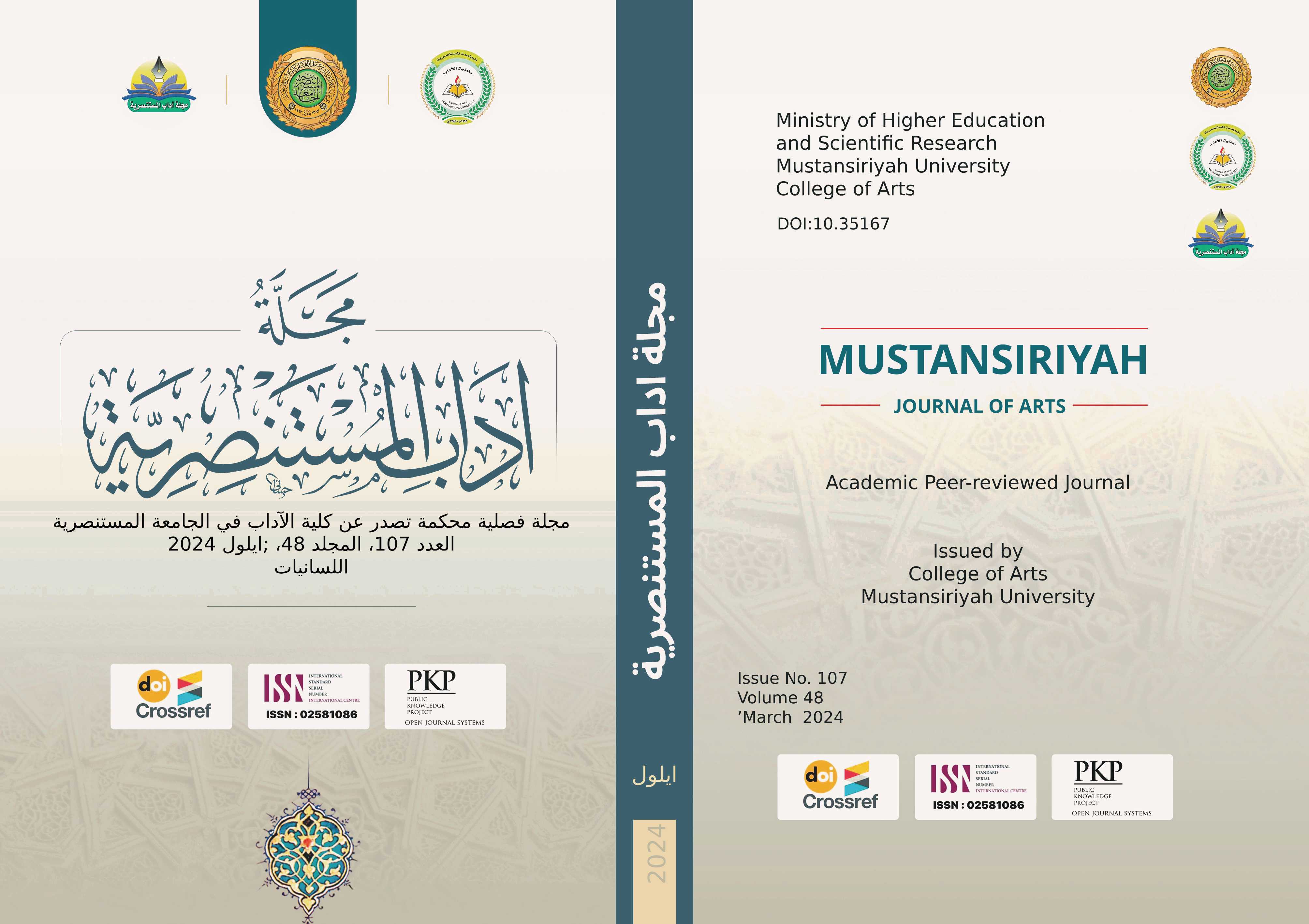The poetics of internal thresholds in Hadiya Hussein’s novel
Abstract
The thresholds of the text are among the important elements in the textual transcendences that surround the main text with all its types, including the title, cover, novel name, introduction, dedication, introduction, opening, and other thresholds that accompany the text, as they constitute a basic entry point in reading the literary text, as it is an identification tool that leads the recipient to secrets, mazes, and places. Beauty, as there is a close relationship between the textual threshold and the literary text, suggesting connotations, revelations, and signals that enable the recipient to facilitate his mission to enter into the depths of the text, penetrate its secrets, and reveal its components. These thresholds may come in line with the recipient’s horizon of expectation, and the recipient anticipates the literary text. But if the opposite happens and the horizon of expectations is broken, then the element of beauty and surprise emerges that dominates the text and attracts the reader more to delve into its depths. Therefore, we find that the threshold station is one of the most important stations that the recipient stops at because of the concise and brief meanings it carries for the narrative text. It has meanings. They carry intense connotations for the text, declared by the author so that the recipient can benefit from them. At the same time, thresholds represent an element of excitement and suspense that summarizes the content of the text. Therefore, thresholds are not just a station that the writer passes through to complete the pillars of the literary text, but today they are one of the most important textual phenomena that surround the literary text. Its secret lies in its composition because of the connotations and latent meanings it conveys
Downloads
Published
Issue
Section
License

This work is licensed under a Creative Commons Attribution-ShareAlike 4.0 International License.


